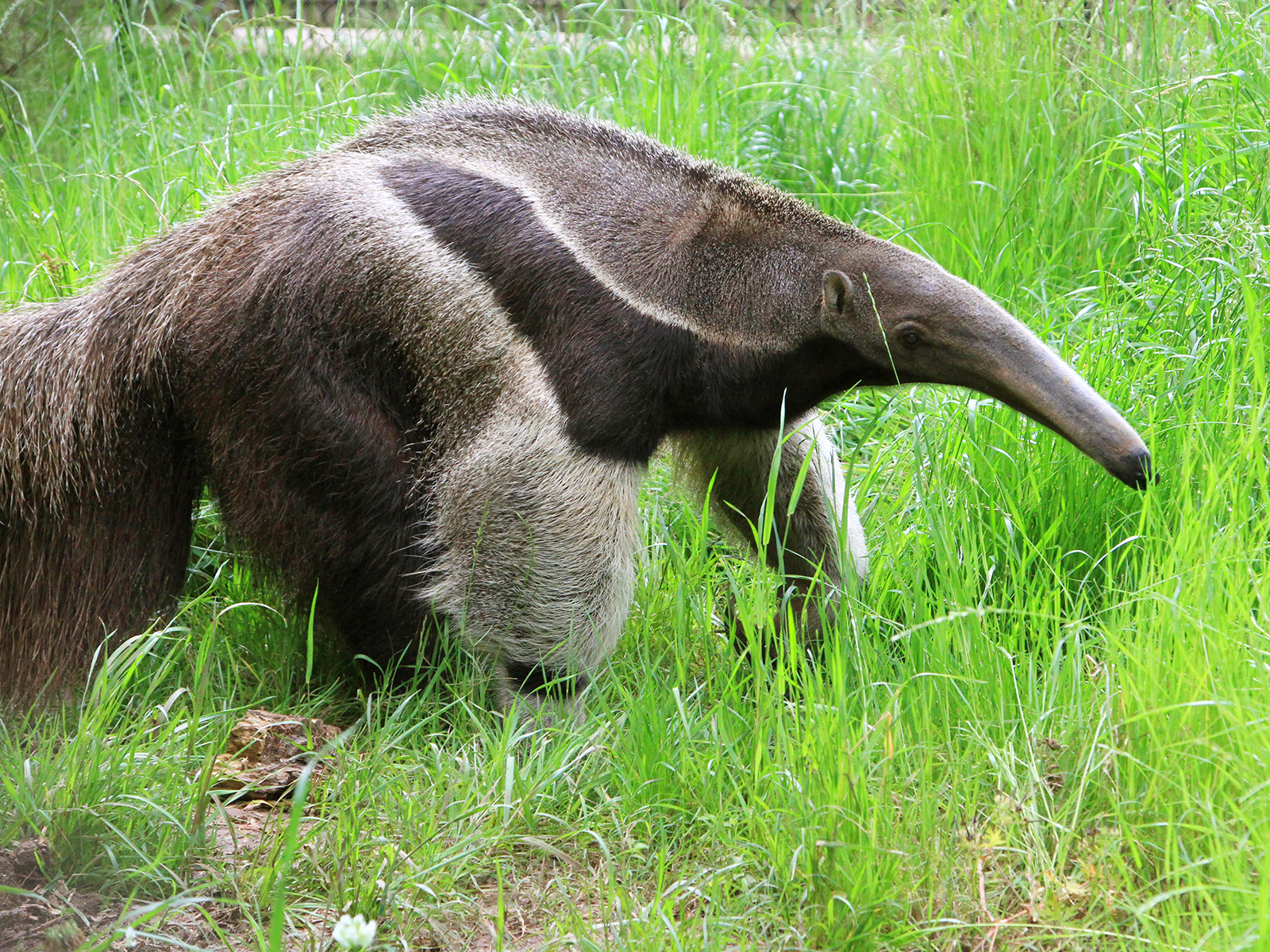Giant Anteater
Myrmecophaga tridactyla
Class
Mammalia
Order
Pilosa
Family
Myrmecophagidae
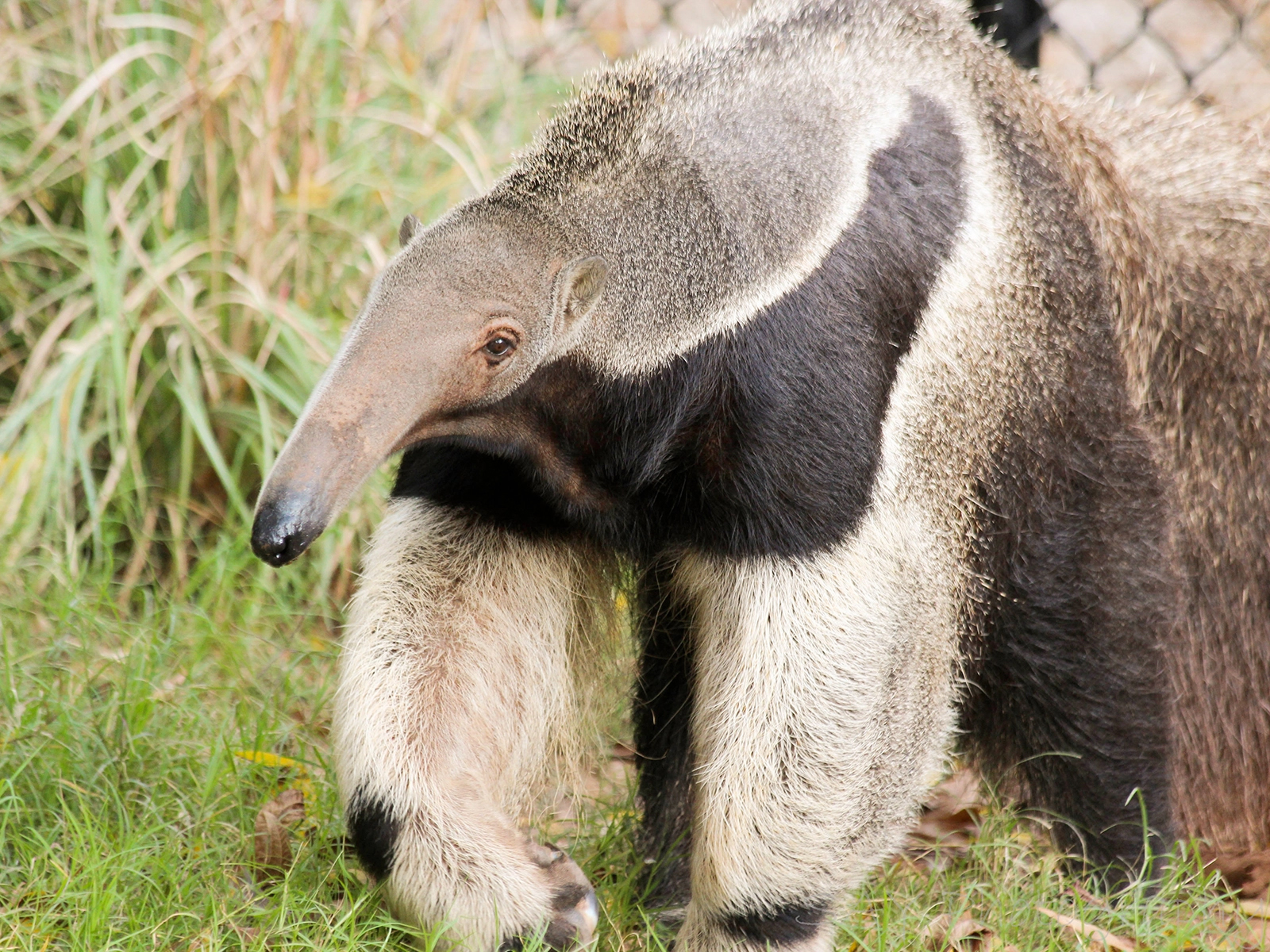
Mammalia
Pilosa
Myrmecophagidae
Southern Belize to northern Argentina
Nose to Tail Length: 5 - 7 ft
Weight: 40 - 100 lbs
Grassland savannas, swamps, humid forests, and woodlands
Pups: 1
Gestation: 6 months
Mainly ants, termites, and their eggs; will also eat ripe fruit
Vulnerable
It uses its long tongue to capture its prey of as many as 30,000 insects in a single day.
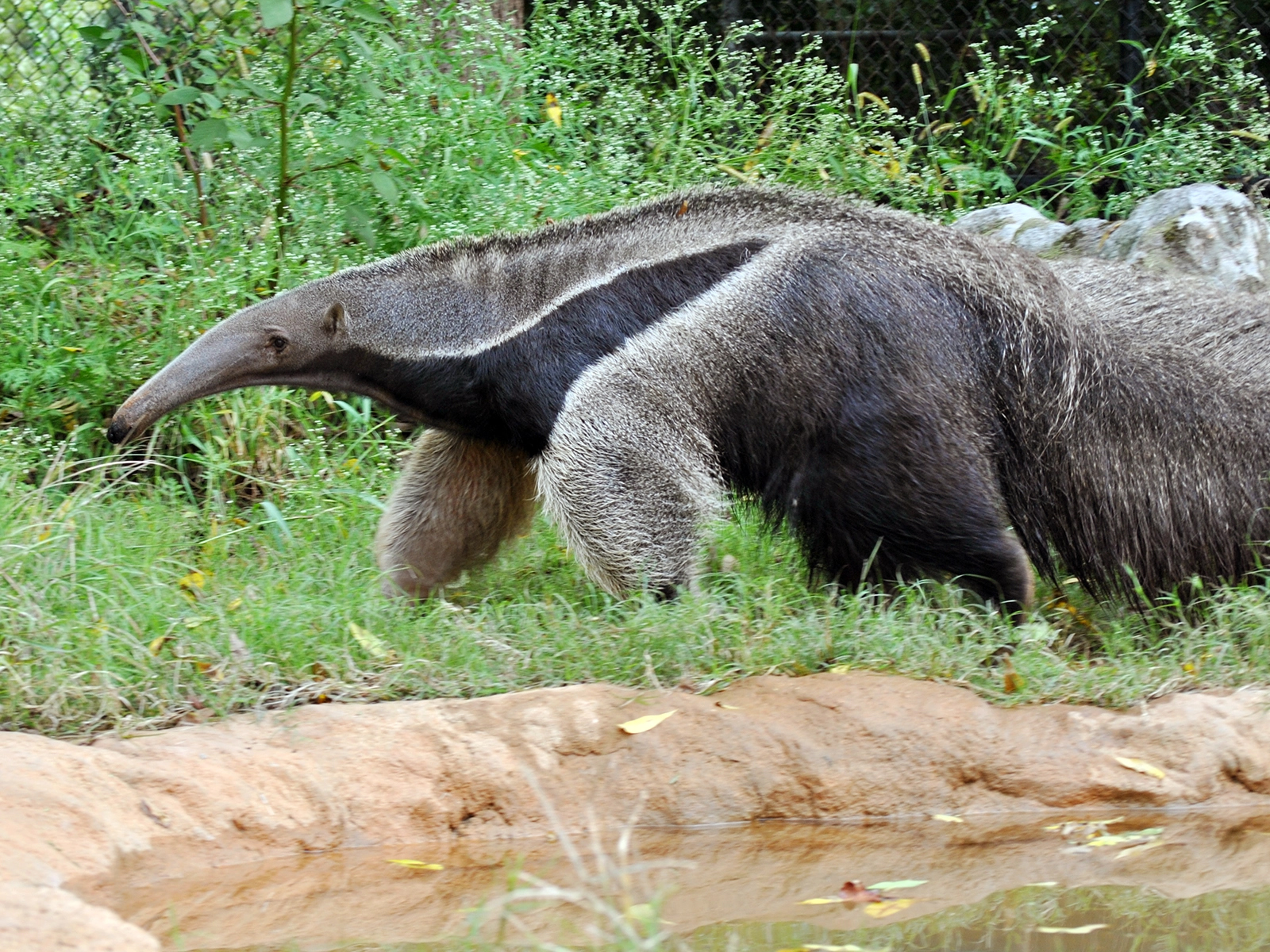
Giant anteaters are generally solitary. They have poor vision, but an excellent sense of smell, which is 40 times more powerful than humans.
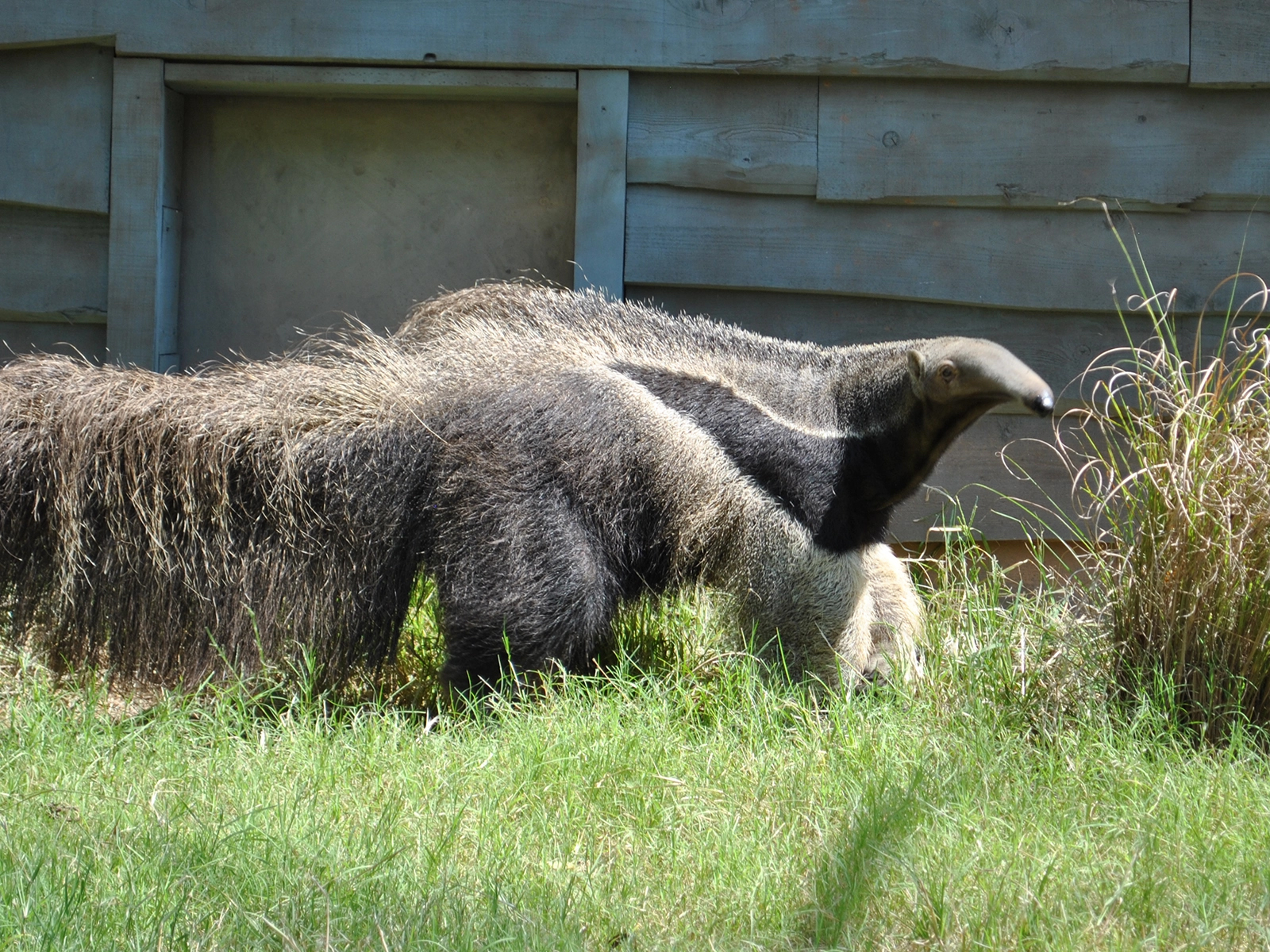
The giant anteater's claws are some four inches long, and the animal can fight off even a cougar or jaguar. They use their sharp claws to tear an opening in anthills or termite mounds. They do not destroy the mound so they can return and feed again later.
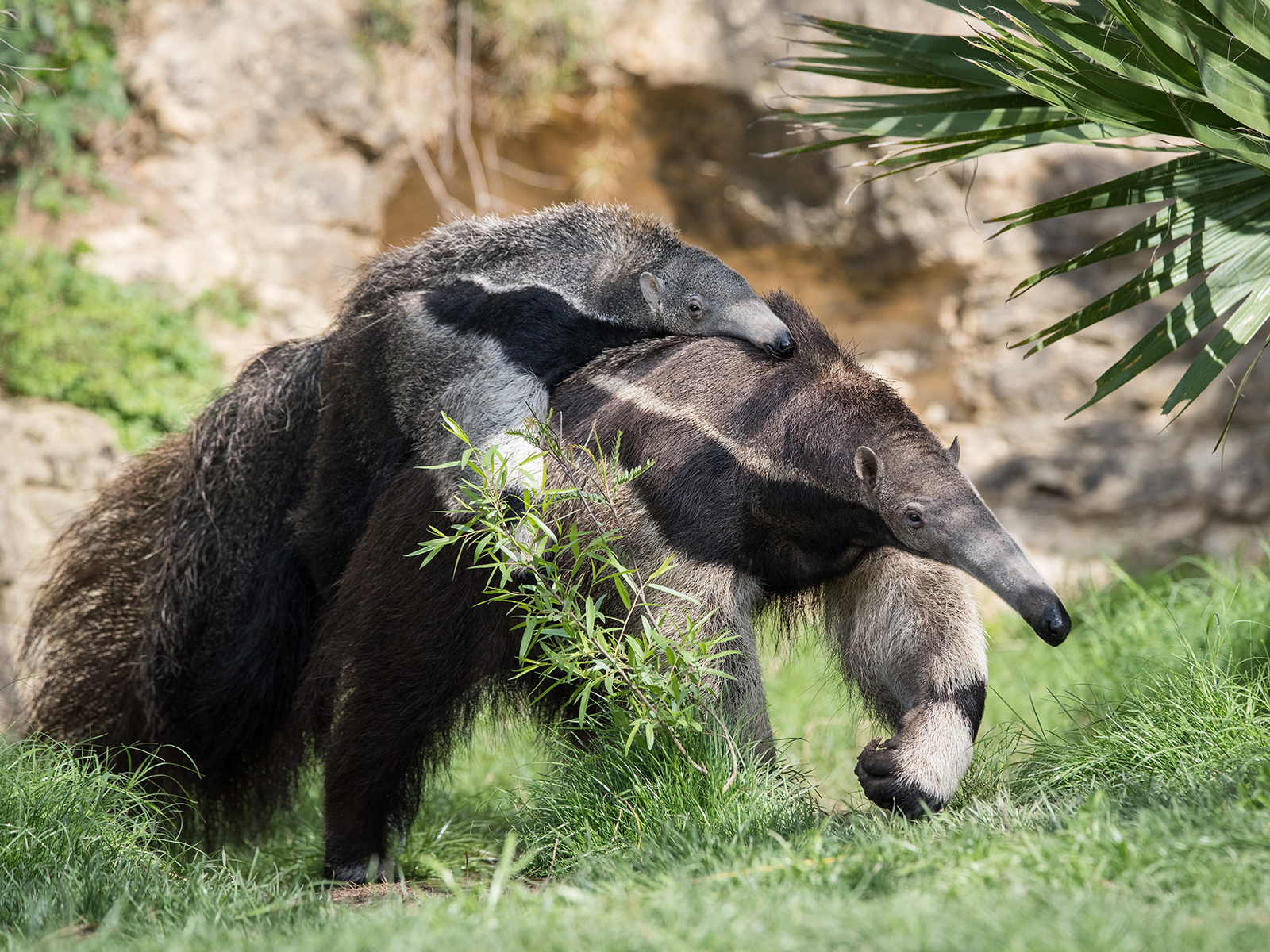
Females give birth to one offspring (twins are rare). Pups average 3 lbs. at birth. For the first four weeks of its life, the pup never leaves its mother. The young will ride on its mother's back for up to a year. The pup is usually weaned at about nine months of age and leaves its mother when it is full grown, at about two years of age.
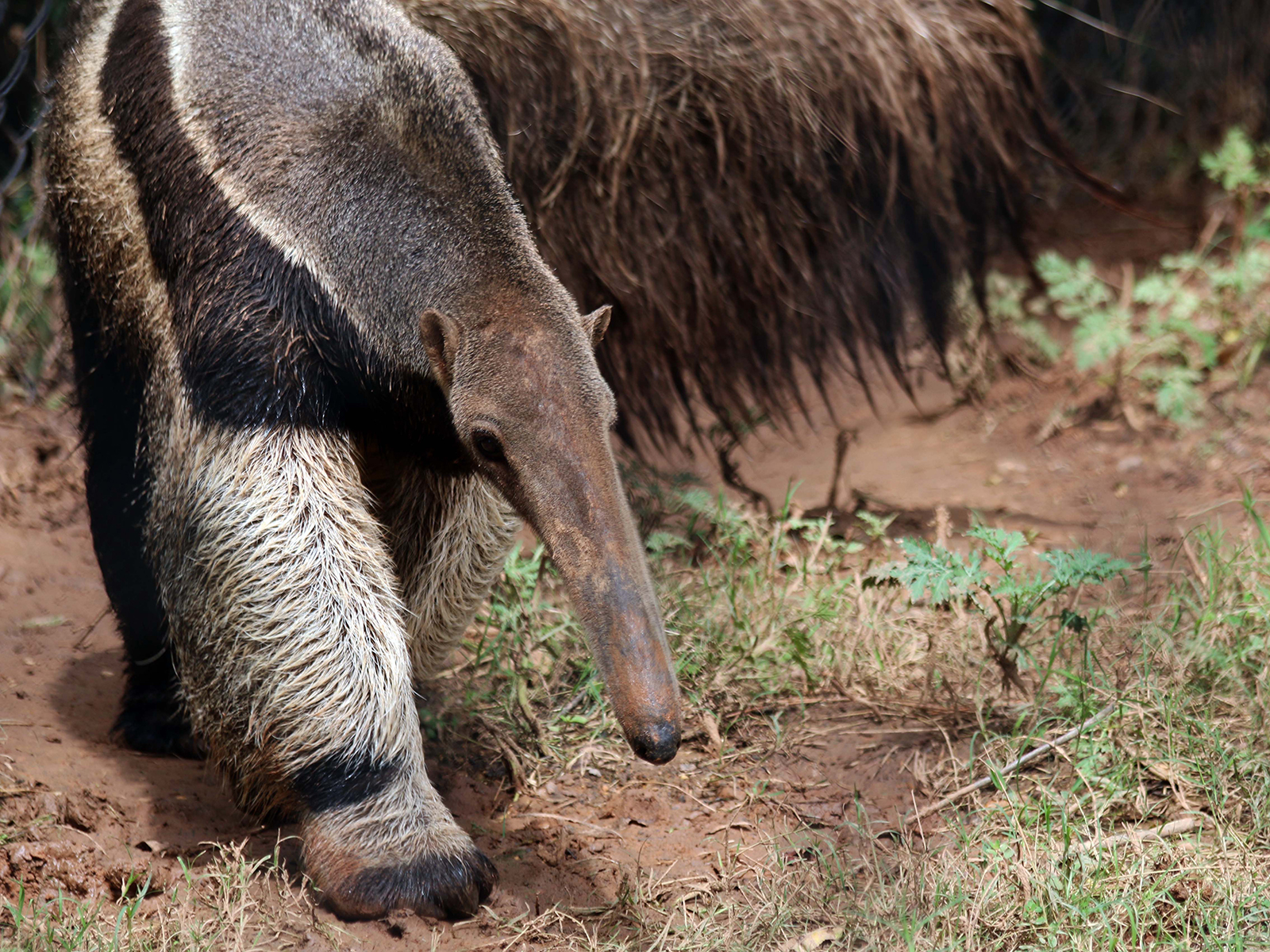
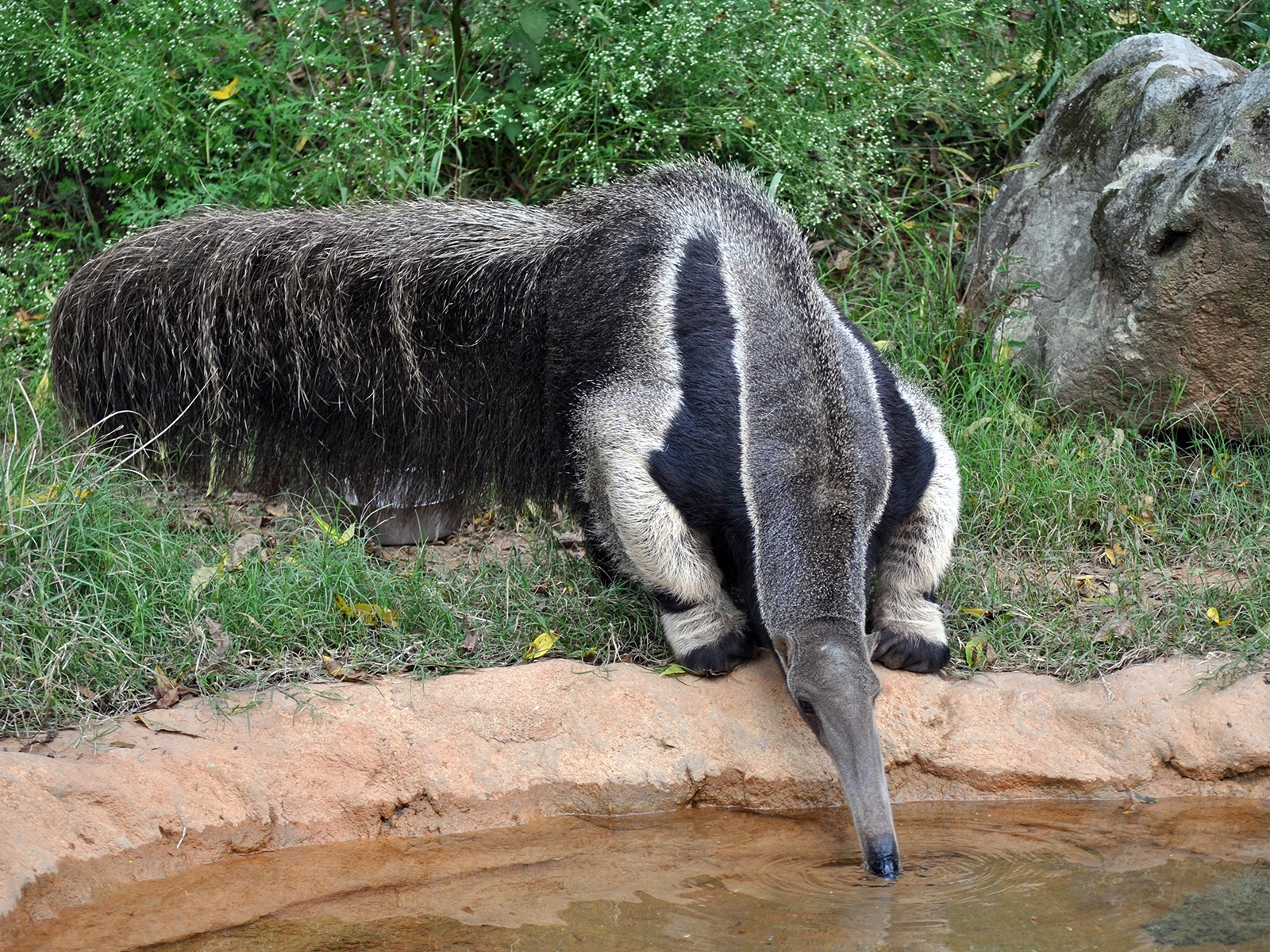
The giant anteaters are disappearing due to the exotic pet trade, habitat destruction, and hunting for food and as pests. They have all but disappeared from their historic range within Central America.
Anteaters are essential in maintaining insect populations. In addition, they are food for other larger carnivores.
Donate to Friends of the Alexandria Zoo. Alexandria Zoo contributes financially to Zoo Conservation Outreach Group (ZCOG), which supports conservation efforts in the Americas for species including the giant anteater.
Educate yourself and others. Learn about the threats facing giant anteaters and share this information with friends and family. Raising awareness can encourage more people to support conservation efforts.
Mochilla: Born February 12, 2016
